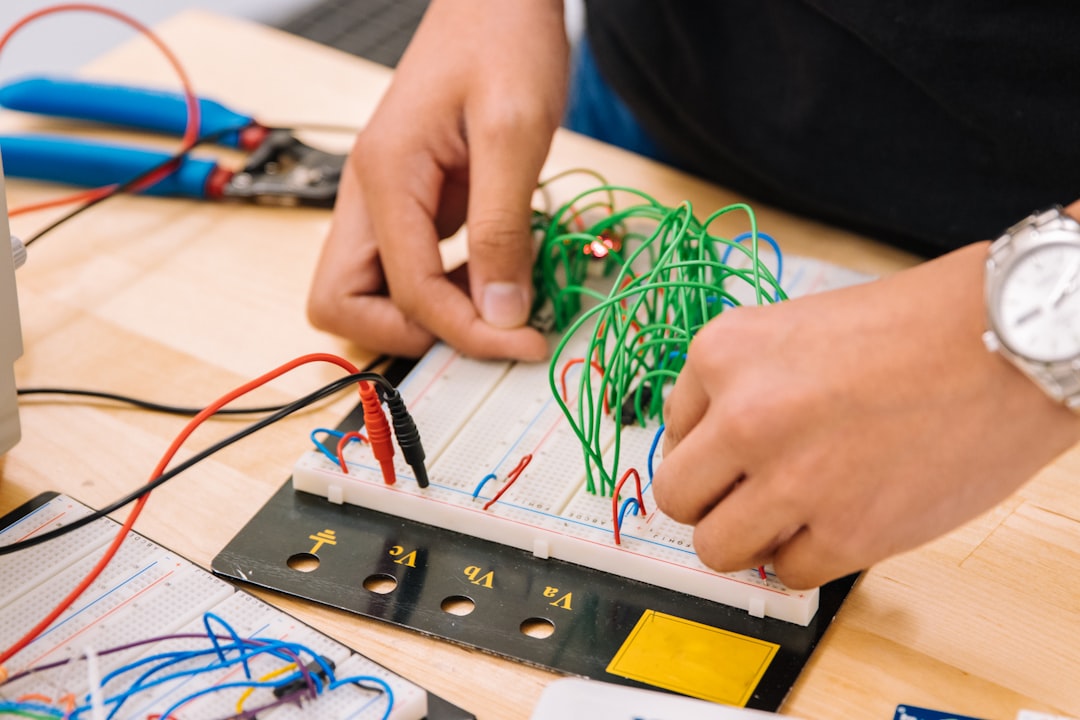
Adaptive learning is an educational approach that tailors the learning experience to meet the individual needs of each student. This method leverages technology to assess a learner’s strengths, weaknesses, preferences, and pace, allowing for a customized educational journey. Unlike traditional learning environments, where a one-size-fits-all curriculum is often employed, adaptive learning systems dynamically adjust content and instructional strategies based on real-time feedback and data analytics.
This personalization can occur in various forms, including adjusting the difficulty of tasks, providing additional resources, or altering the sequence of topics based on a student’s performance. The concept of adaptive learning is rooted in the understanding that learners are not homogeneous; they come with diverse backgrounds, learning styles, and cognitive abilities. By utilizing algorithms and data-driven insights, adaptive learning platforms can create a more inclusive and effective educational experience.
For instance, if a student struggles with a particular mathematical concept, the system can identify this gap and provide targeted exercises or alternative explanations to help the learner grasp the material. This approach not only enhances comprehension but also fosters a sense of agency in students as they take ownership of their learning process.
Key Takeaways
- Adaptive learning is a method of teaching and learning that uses technology and data to personalize the learning experience for each student.
- The benefits of adaptive learning include improved student performance, increased retention rates, and a more efficient use of instructional time.
- Adaptive learning enhances student engagement by providing personalized learning experiences, immediate feedback, and interactive content.
- Personalized learning paths in adaptive learning allow students to progress at their own pace and focus on areas where they need the most help.
- Technology plays a crucial role in adaptive learning by providing the data and tools needed to create personalized learning experiences for students.
The Benefits of Adaptive Learning
One of the most significant benefits of adaptive learning is its ability to improve academic outcomes. Research has shown that personalized learning experiences can lead to higher retention rates and better performance on assessments. By focusing on individual needs, adaptive learning systems can help students master concepts at their own pace, reducing frustration and increasing motivation.
For example, a study conducted by the Bill & Melinda Gates Foundation found that students using adaptive learning technologies demonstrated greater gains in math and reading compared to their peers in traditional classrooms. Moreover, adaptive learning promotes inclusivity by accommodating diverse learning styles and abilities. Students who may struggle in conventional settings—such as those with learning disabilities or language barriers—can benefit from tailored resources that cater to their specific challenges.
This adaptability not only helps in leveling the playing field but also encourages a growth mindset among learners. When students see that they can progress through personalized pathways, they are more likely to engage with the material and develop resilience in the face of academic challenges.
How Adaptive Learning Enhances Student Engagement

Engagement is a critical factor in effective learning, and adaptive learning environments are designed to foster this engagement through interactive and responsive content. By providing immediate feedback and adjusting to a student’s performance in real-time, these systems keep learners actively involved in their education. For instance, gamified elements—such as points, badges, or leaderboards—can be integrated into adaptive platforms to motivate students further.
Additionally, adaptive learning systems often incorporate multimedia resources such as videos, simulations, and interactive quizzes that cater to various learning preferences. This variety helps maintain student interest and caters to visual, auditory, and kinesthetic learners alike.
For example, a student who struggles with reading comprehension might benefit from video explanations or interactive storytelling that brings concepts to life. By engaging multiple senses and providing diverse ways to interact with content, adaptive learning creates a richer educational experience that resonates with students on different levels.
Personalized Learning Paths
| Metrics | 2019 | 2020 | 2021 |
|---|---|---|---|
| Number of Users | 1000 | 1500 | 2000 |
| Completion Rate | 70% | 75% | 80% |
| Engagement Rate | 60% | 65% | 70% |
Personalized learning paths are at the heart of adaptive learning systems. These paths are designed based on an individual’s unique profile, which includes their prior knowledge, interests, and learning pace. As students progress through their educational journey, the system continuously analyzes their performance data to refine these paths further.
This iterative process ensures that learners are always challenged appropriately without feeling overwhelmed. For instance, consider a high school student studying biology. An adaptive learning platform might begin by assessing the student’s understanding of basic concepts before introducing more complex topics like cellular respiration or genetics.
If the student excels in certain areas but struggles with others, the system can adjust the curriculum accordingly—perhaps offering additional resources or practice problems focused on genetics while allowing the student to advance more quickly through cellular respiration. This level of customization not only enhances mastery of content but also instills confidence in learners as they see tangible progress tailored to their abilities.
The Role of Technology in Adaptive Learning
Technology plays a pivotal role in the implementation and effectiveness of adaptive learning systems. Advanced algorithms and machine learning techniques enable these platforms to analyze vast amounts of data quickly and accurately. This capability allows for real-time adjustments to be made based on student interactions with the material.
For example, if a student consistently answers questions incorrectly on a specific topic, the system can flag this area for review and provide additional resources or alternative explanations. Furthermore, cloud computing has made it easier for educators to access adaptive learning tools from anywhere, facilitating collaboration among teachers and students alike. With online platforms, educators can track student progress over time and share insights with colleagues or parents.
This transparency fosters a supportive learning environment where stakeholders can work together to address challenges and celebrate successes. Additionally, mobile technology has expanded access to adaptive learning resources beyond the classroom, allowing students to engage with content anytime and anywhere.
Overcoming Challenges in Implementing Adaptive Learning

Initial Investment and Resource Allocation
One of the significant hurdles is the initial investment required for technology infrastructure and training. Schools need to allocate substantial resources for software licenses, hardware upgrades, and professional development for educators.
Resistance to Change and Data Privacy Concerns
Another challenge lies in the resistance from faculty who are accustomed to traditional teaching methods and may be hesitant to embrace new technologies. Furthermore, ensuring data privacy and security is crucial, as adaptive learning systems collect sensitive information about students’ performance and behaviors. Educational institutions must implement robust data protection measures to safeguard this information.
Building Trust and Ensuring Compliance
Parents and guardians must also be informed about how their children’s data will be used and safeguarded. Establishing clear policies regarding data usage can help build trust among stakeholders while ensuring compliance with regulations such as FERPA (Family Educational Rights and Privacy Act) in the United States. By addressing these challenges, educational institutions can successfully implement adaptive learning systems that benefit both students and educators.
Case Studies: Success Stories of Adaptive Learning
Several educational institutions have successfully implemented adaptive learning systems with remarkable results. One notable example is Arizona State University (ASU), which adopted an adaptive learning platform for its introductory mathematics courses. By utilizing this technology, ASU was able to increase pass rates significantly among students who previously struggled with math.
The platform provided personalized support through targeted practice problems and immediate feedback, allowing students to master concepts before moving on. Another success story comes from Knewton, an adaptive learning company that partnered with various educational publishers to enhance their offerings. In one case study involving high school English language arts classes, Knewton’s platform analyzed student performance data to deliver customized reading materials aligned with individual interests and reading levels.
The result was a marked increase in student engagement and improved literacy skills across diverse classrooms.
The Future of Adaptive Learning in Education
The future of adaptive learning in education appears promising as advancements in technology continue to evolve. Artificial intelligence (AI) is expected to play an increasingly significant role in refining adaptive learning systems by providing even more sophisticated analytics and insights into student behavior. As AI algorithms become more adept at predicting student needs based on historical data, personalized learning experiences will become even more precise.
Moreover, as educational institutions increasingly recognize the importance of social-emotional learning (SEL), adaptive learning systems may begin incorporating elements that address not only academic needs but also emotional well-being. By integrating SEL frameworks into adaptive platforms, educators can support students holistically—fostering resilience, empathy, and interpersonal skills alongside academic achievement. In conclusion, adaptive learning represents a transformative approach to education that prioritizes individual learner needs through personalized pathways and technology-driven insights.
As schools continue to embrace this model, it holds the potential to reshape how we think about teaching and learning in the 21st century.
If you are looking to expand your academic vocabulary, you may also be interested in learning about adaptive learning strategies. Check out this article on



